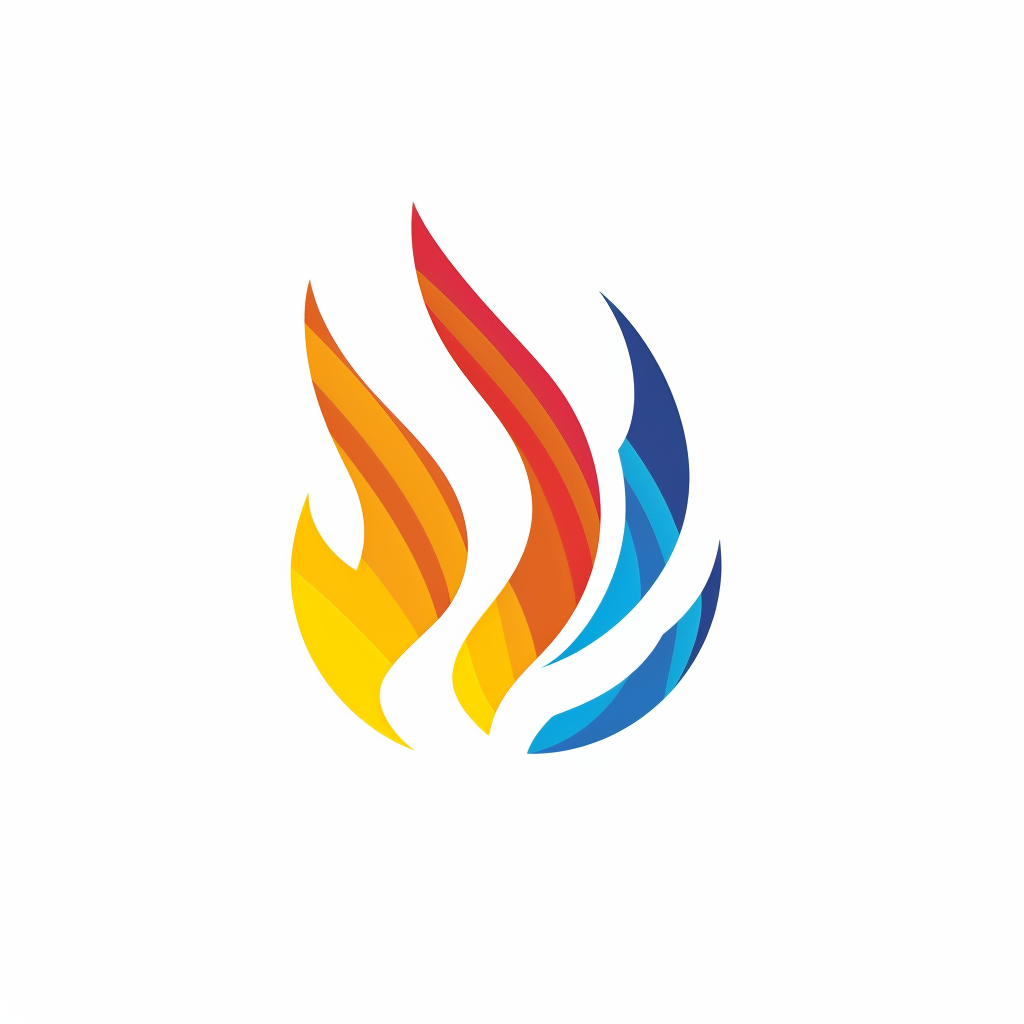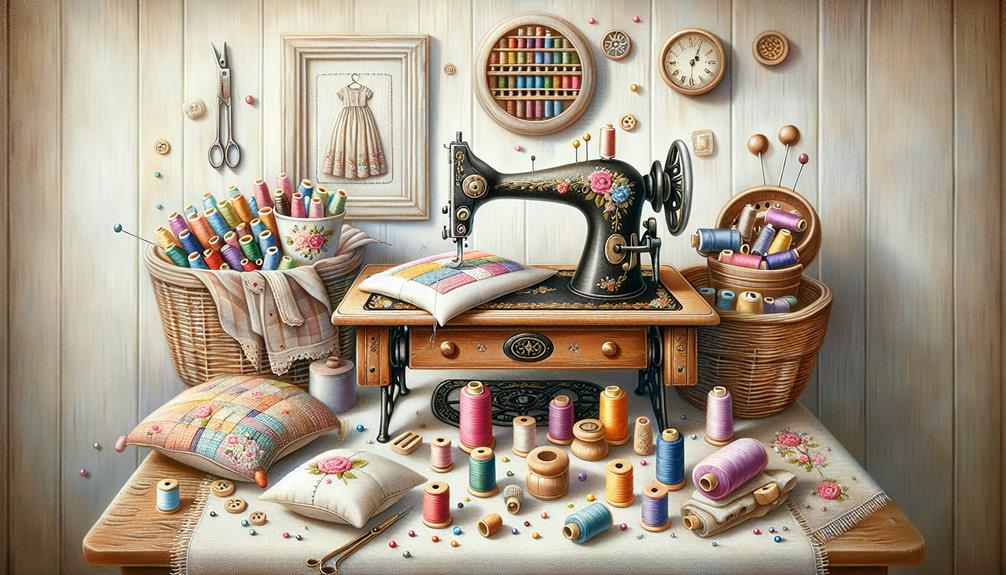Sewing machines have been an integral part of households and industries for centuries, revolutionizing the way fabric is stitched and garments are made. From the humble hand-cranked machines to the sophisticated computerized models of today, the evolution of sewing technology is a testament to human ingenuity and innovation.
Understanding the different types of sewing machines, their key features, and functions can vastly improve one's sewing experience, whether you are a beginner or a seasoned pro. But what really sets a great sewing machine apart is how it can turn a simple piece of fabric into a work of art.
Key Takeaways
- Evolution of sewing machines transformed textile industry
- Types include mechanical, electronic, and overlock machines
- Key features: variety of stitches, adjustable speed, automatic threading
- Maintenance tips: clean regularly, oil properly, use correct needles
Evolution of Sewing Machines
The evolution of the sewing machine dates back to the early 19th century when its invention revolutionized the textile industry. Before its creation, sewing was a time-consuming task done entirely by hand, limiting the speed and efficiency of textile production. The first functional sewing machine was invented by Thomas Saint in 1790, but it was not until the mid-19th century that practical machines for home and industrial use were developed.
As the demand for textiles grew, so did the need for more advanced and specialized sewing machines. Companies like Singer and Brother played significant roles in advancing sewing technology, introducing features like automatic thread tension, zigzag stitching, and computerized controls.
The evolution of sewing machines has been marked by constant innovation and improvement. From the basic straight stitch machines of the past to the modern computerized models capable of intricate embroidery and quilting, sewing machines have come a long way in meeting the diverse needs of seamstresses and tailors worldwide.
Types of Sewing Machines
With the evolution and advancements in sewing machine technology, various types of sewing machines have been developed to cater to different sewing needs and preferences. These machines are designed to enhance efficiency, precision, and creativity in sewing projects. Here are three common types of sewing machines:
- Mechanical Sewing Machines: These traditional machines are operated manually using a foot pedal or handwheel. They are suitable for basic sewing tasks like garment construction, alterations, and simple crafts.
- Electronic Sewing Machines: Electronic sewing machines have built-in computerized systems that offer a wide range of stitch options, automatic thread cutting, speed control, and LCD screens for easy navigation. They are ideal for sewers looking to explore more intricate designs and patterns.
- Overlock Sewing Machines: Also known as sergers, overlock machines are specialized in creating professional-looking seams, hems, and decorative edges. They can trim, stitch, and finish fabric edges in one step, making them essential for garment construction and finishing touches.
Key Features and Functions
Exploring the intricate workings of modern sewing machines reveals a plethora of key features and functions that contribute to their efficiency and versatility. One essential feature is the variety of stitches available, such as straight, zigzag, and decorative stitches, allowing for diverse creative possibilities.
Adjustable stitching speed control is another vital function, enabling users to work at a pace comfortable for them and achieve precise results. Automatic needle threading simplifies the setup process, saving time and frustration.
Many sewing machines come with built-in LED lights, illuminating the work area for enhanced visibility, especially when working on intricate details. Additionally, the presence of a drop-in bobbin system facilitates easy bobbin changes and ensures smooth stitching.
Some models offer automatic buttonholing and one-step button attachment functions, streamlining garment construction. These features and functions collectively enhance the sewing experience, making it more enjoyable and efficient for both beginners and experienced sewists.
Tips for Sewing Machine Maintenance
To ensure optimal performance and longevity of your sewing machine, regular maintenance is essential. Here are three key tips to help you keep your sewing machine in top condition:
- Cleaning: Regularly clean your sewing machine by removing lint, dust, and thread fragments. Use a small brush to clean the feed dogs, bobbin case, and tension discs. This prevents build-up that can affect the machine's performance.
- Oil and Lubrication: Proper lubrication is crucial for the smooth operation of your sewing machine. Refer to your machine's manual to identify the points that require oiling. Use high-quality sewing machine oil and lubricants as recommended by the manufacturer.
- Needle and Bobbin Care: Always use the correct type and size of needles for your fabric. Replace dull or bent needles promptly to avoid damaging the fabric or machine. Ensure the bobbin is inserted correctly and wound evenly to prevent jams and tension issues.
Creative Projects With Sewing Machines
When looking to expand your sewing skills beyond maintenance tasks, exploring creative projects with sewing machines can open up a world of artistic possibilities. From crafting personalized garments to designing unique home decor items, sewing machines can unleash your creativity and help you bring your ideas to life.
Quilting is a popular creative project that allows you to combine different fabrics and patterns to make beautiful blankets, wall hangings, or even clothing. For those interested in fashion design, sewing machines are essential tools for creating custom-made clothing that fits perfectly.
Additionally, embroidery work using a sewing machine can add intricate designs to various fabrics, adding a touch of elegance to your projects. Whether you are a beginner or an experienced seamstress, creative projects with sewing machines offer a fulfilling way to express yourself through fabric and thread, making each creation a reflection of your unique style and craftsmanship.
Frequently Asked Questions
How Do I Troubleshoot Common Issues With My Sewing Machine?
When troubleshooting common issues with any machine, it is essential to start by identifying the specific problem at hand. By understanding the symptoms and potential causes, you can systematically work through possible solutions.
Begin with basic checks like power source and connections, then move on to inspecting components and settings. Utilize user manuals or online resources for guidance and consider seeking professional assistance if needed.
What Are the Differences Between Mechanical and Computerized Sewing Machines?
When considering tools for a task, the distinction between mechanical and computerized options is crucial. Mechanical devices rely on manual operation and physical components, offering a simplistic and traditional approach.
In contrast, computerized systems incorporate advanced technology, providing precision, automation, and programmable features.
The choice between the two depends on one's preference for traditional methods or desire for cutting-edge efficiency and convenience.
Can I Use Regular Thread in My Sewing Machine, or Do I Need Specialized Sewing Machine Thread?
Yes, regular thread can generally be used in sewing machines. However, specialized sewing machine threads are recommended for optimal performance and durability. Regular threads may break more easily or cause tension issues.
It is best to use threads specifically designed for sewing machines to ensure smooth stitching and prevent any potential damage to the machine. Always refer to your sewing machine's manual for guidance on thread compatibility and recommendations.
How Often Should I Have My Sewing Machine Serviced by a Professional?
Regular maintenance is crucial for optimal performance and longevity of machinery. For sewing machines, professional servicing should be scheduled at least once a year to prevent potential breakdowns and ensure smooth operation.
Following manufacturer's recommendations and guidelines can help maintain the machine's quality and efficiency. Additionally, professional servicing can address any underlying issues that may not be apparent to the untrained eye, ultimately saving time and money in the long run.
Are There Any Specific Safety Precautions I Should Take When Using a Sewing Machine?
When engaging in any activity involving machinery, it is crucial to prioritize safety. Whether operating a vehicle, power tool, or electronic device, individuals should always adhere to specific safety precautions.
These measures may include:
- wearing appropriate protective gear,
- following manufacturer guidelines,
- maintaining a clean and organized workspace, and
- seeking proper training or certification when necessary.
Conclusion
In conclusion, the sewing machine has evolved significantly over the years, offering a variety of types with key features and functions. Proper maintenance is essential to keep the machine in good working condition.
From basic repairs to intricate designs, sewing machines can be used for a wide range of creative projects. Whether you are a beginner or an experienced seamstress, the sewing machine remains a versatile tool for all your sewing needs.

